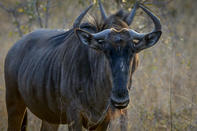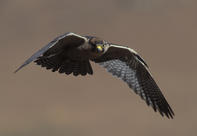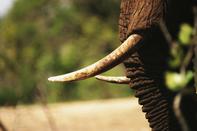Fascinating Fun Figures
The park has some 900 kilometres of tar roads, 2 000 kilometres of dirt roads and 4 500 kilometres of management roads.

At last count, Kruger was home to 1 982 species of plants, 517 of birds, 52 of fish, 35 of amphibians, 119 of reptiles and 147 of mammals (including 11 670 elephants, 150 000 impalas, 17 000 blue wildebeest, 9 000 giraffes, 3 000 hippos and 70 roan antelopes).
The Delicate Balance

Because life is so water-dependent the conservation of water resources is the basis of all conservation, but wild animals in the Kruger National Park have to compete for water rights with neighbouring farmers.
Seven main rivers flow from the west across the Lowveld to feed the park, but the Crocodile, Sabie, Sand, Olifants, Letaba, Luvuvhu and Limpopo rivers have all been regulated upstream so as to eliminate their naturally intermittent flow as well as the seasonal floods.
The animals of the Kruger National Park are adapted to this variability and the delicate balance of the park's ecosystem depends on it.
Lanner Gorge

The birds-eye view allowed for at Lanner Gorge is definitely the best way to see the spectacular Luvuvhu River cutting its way through the Kruger National Park. The problem is that you won't be able to access it on any public road because it lies within the private Makuleke Concession in the far north.
The concession is managed by Wilderness Safaris, so you'll have to be a guest of theirs at Pafuri Camp or on the three-night Pafuri Trail before you'll get the privilege of seeing the view that otherwise only lanner falcons and avian sightseers do.
Kruger's Big Tuskers

Big tuskers are prize targets for ivory poachers, and hence few survive. In the protected environment of the Kruger National Park, however, there is a relatively large population of bull elephants with large tusks.
Elephants may be reputed to be slow, poor-sighted creatures, but they move with surprising speed and should always be treated with great respect, even from the relative safety of a motor vehicle. Large baobabs in the north of the Kruger National Park have been aged at over 3 000 years.
These trees can withstand fierce bush fires but they cannot withstand the persistent attack of elephants who gouge out and strip the thick, moist bark.
By David Bristow There is a wide variety of accommodation in Kruger National Park options ranging from rest camps to luxury Kruger Park safari lodges....
There is a wide variety of accommodation in Kruger National Park options ranging from rest camps to luxury Kruger Park safari lodges.... The Kruger National Park (KNP, or simply ‘Kruger’, for short) is the premier game reserve in South Africa. Offering excellent Big Five g...
The Kruger National Park (KNP, or simply ‘Kruger’, for short) is the premier game reserve in South Africa. Offering excellent Big Five g... Eager to keep the legend going, the Kruger National Park has launched the Emerging Tuskers Project ‘to identify all of the Park's large tu...
Eager to keep the legend going, the Kruger National Park has launched the Emerging Tuskers Project ‘to identify all of the Park's large tu...